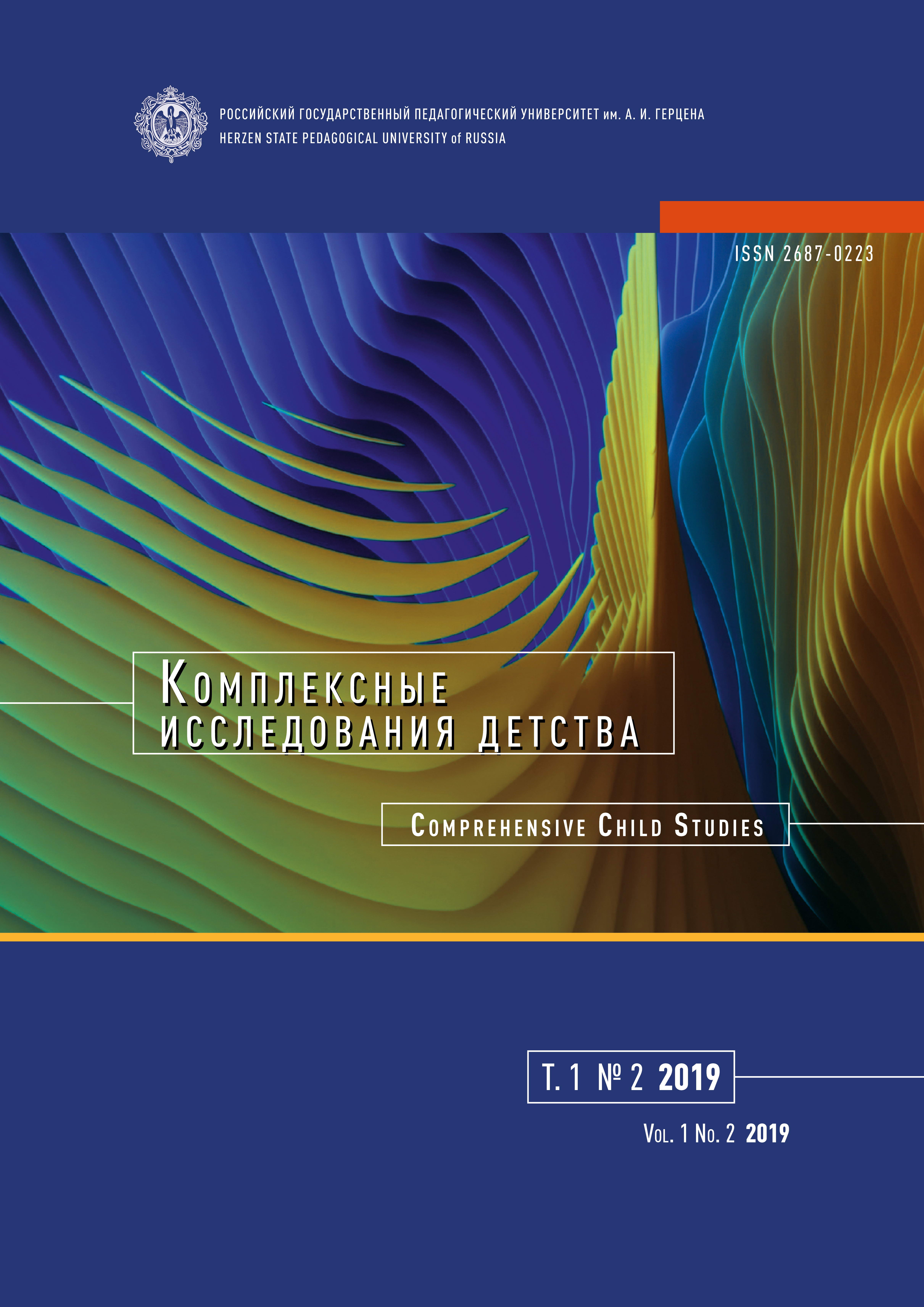Visual perception of texts in different visual formats: A study of children with mental disability
DOI:
https://doi.org/10.33910/2687-0223-2019-1-2-114-121Keywords:
oculomotor activity, visual perception of the text, students, mild mental disabilityAbstract
The paper presents the results of a study of visual perception in mentally retarded children using the EyeTech VT3 mini IT tracker with a sampling frequency of 60 Hz and MangoldVision software. The survey involved 31 primary schoolchildren aged 8–11 (9.5 ± 0.8 years) diagnosed with mental retardation (F70) according to the international classification of diseases (ICD-10). The control group consisted of 42 students aged 8–9 (8.5 ± 0.5 years) with normative development and students from a gymnasium specializing in the English language. The stimulus material included five texts in various visual formats adapted in terms of content and volume (55 words). The oculomotor activity patterns were evaluated using the hardware method of recording eye movements. The parameters analyzed included reading duration, total number of fixations on the text, average duration of fixations, average amplitude of saccades. The analysis concerned spatial and temporal parameters of the oculomotor activity of students with mild mental retardation when reading aloud texts in various visual formats. It was found that texts with a shortened line length, highlighted syllables and black background could be considered the easiest for children with mild mental retardation. In contrast, reading illustrated texts takes more time and effort.
References
Afflerbach, P., Pearson, P. D., Paris, S. G. (2008) Clarifying differences between reading skills and reading strategies. The Reading Teacher, vol. 61, no. 5, pp. 364–373. DOI: 10.1598/RT.61.5.1 (In English)
Barabanschikov, V. A., Zhegallo, A. V. (2010) Metody registratsii dvizhenij glaz: teoriya i praktika [Eye-tracking methods: Theory and practice]. Psikhologicheskaya nauka i obrazovanie — Psychological Science and Education, vol. 2, no. 5, pp. 240–254. (In Russian)
Booth, J. R., Perfetti, C. A., MacWhinney, B. (1999) Quick, automatic, and general activation of orthographic and phonological representations in young readers. Developmental Psychology, vol. 35, no. 1, pp. 3–19. PMID: 9923460. DOI: 10.1037/0012-1649.35.1.3 (In English)
Kaakinen, J. K., Hyönä, J., Keenan, J. M. (2002) Perspective effects on online text processing. Discourse Processes, vol. 33, no. 2, pp. 159–173. DOI: 10.1207/S15326950DP3302_03 (In English)
Kintsch, W., van Dijk, T. A. (1978) Toward a model of text comprehension and production. Psychological Review, vol. 85, no. 5, pp. 363–394. DOI: 10.1037/0033-295X.85.5.363 (In English)
Levie, W. H., Lentz, R. (1982) Effects of text illustrations: A review of research. Educational Communication and Technology: A Journal of Theory, Research, and Development, vol. 30, no. 4, pp. 195–232. (In English)
Mental retardation. International statistical classification of diseases and related health problems 10th revision. [Online]. Available at: https://icd.who.int/browse10/2019/en#/F70-F79 (accessed 13.08.2019) (In Russian)
Rayner, K. (1998) Eye movements in reading and information processing: 20 years of research. Psychological Bulletin, vol. 124, no. 3, pp. 372–422. PMID: 9849112. DOI: 10.1037/0033-2909.124.3.372 (In English)
Rello, L., Kanvinde, G., Baeza-Yates, R. (2012) Layout guidelines for web text and a web service to improve accessibility for dyslexics. In: W4A’12: Proceedings of the International cross-disciplinary conference on web accessibility. New York, NY: Association for Computing Machinery, article 36. DOI: 10.1145/2207016.2207048 (In English)
Published
Issue
Section
License
The work is provided under the terms of the Public Offer and of Creative Commons public license Creative Commons Attribution 4.0 International (CC BY 4.0).
This license permits an unlimited number of users to copy and redistribute the material in any medium or format, and to remix, transform, and build upon the material for any purpose, including commercial use.
This license retains copyright for the authors but allows others to freely distribute, use, and adapt the work, on the mandatory condition that appropriate credit is given. Users must provide a correct link to the original publication in our journal, cite the authors' names, and indicate if any changes were made.
Copyright remains with the authors. The CC BY 4.0 license does not transfer rights to third parties but rather grants users prior permission for use, provided the attribution condition is met. Any use of the work will be governed by the terms of this license.







